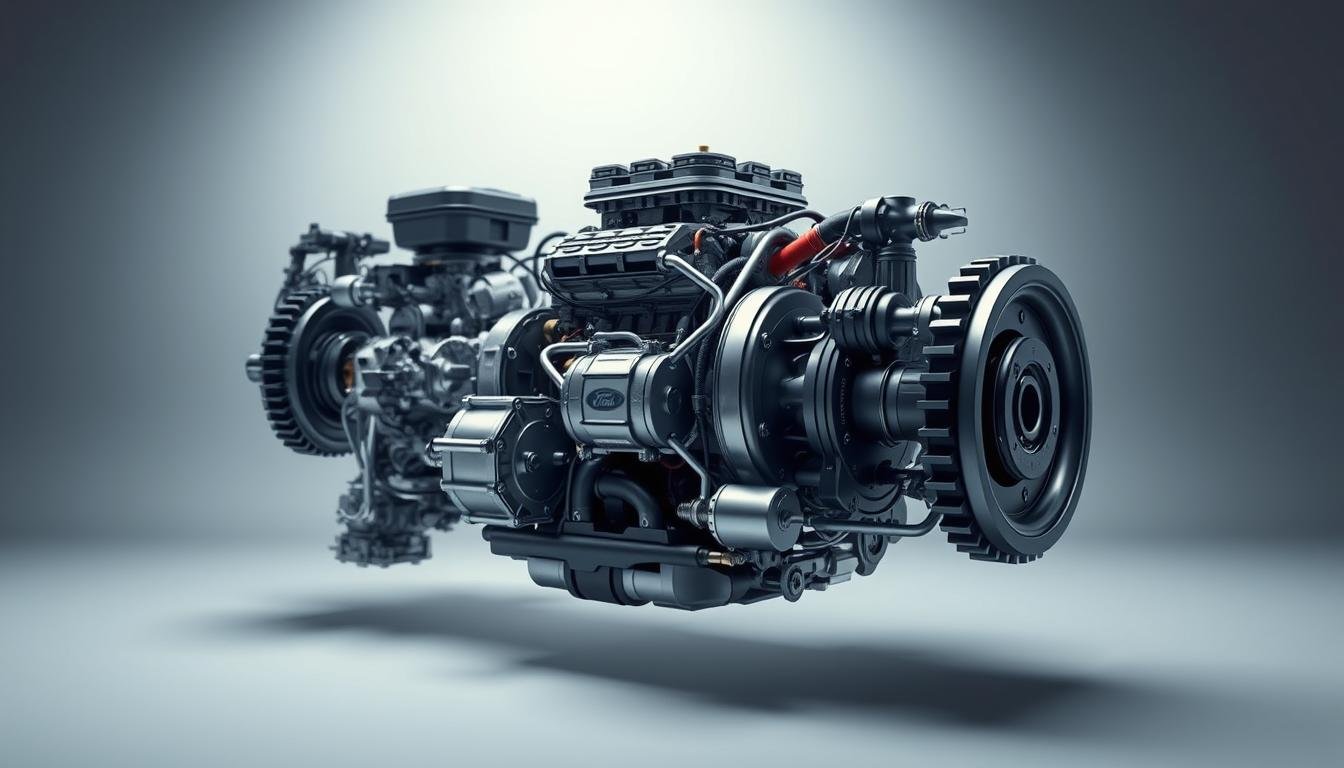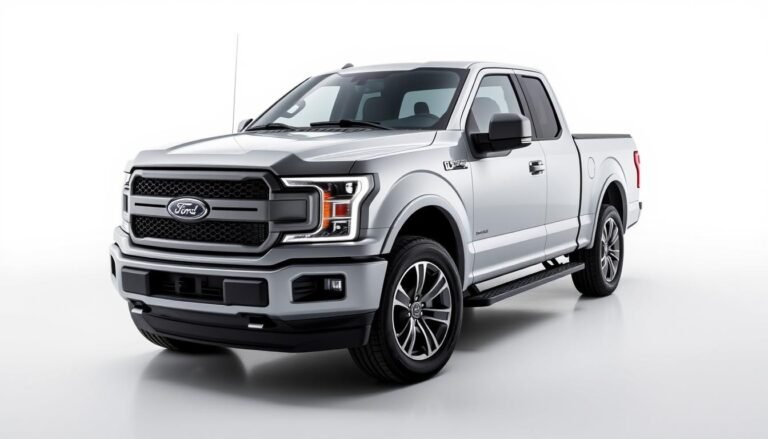What Does Ford Powertrain Warranty Coverage Explained?
The Ford Powertrain Warranty protects your vehicle for 5 years or 60,000 miles, whichever comes first. It helps cover repair costs for major parts like the engine and transmission.
We’ll dive into what the warranty includes, its duration, its limits, and its benefits for you as the owner. Knowing what the warranty covers helps you handle car ownership more confidently.
We’ll explain which parts are covered and discuss repair costs. For example, small transmission repairs might cost $150 to $400. But a big rebuild could cost $1,500 to $4,000.
Knowing these costs helps you plan for maintenance and unexpected repairs. This knowledge gives you peace of mind while driving your Ford.
What Is The Ford Powertrain Warranty?
The Ford Powertrain Warranty acts as a guard for your car’s most vital parts. It covers the engine, transmission, and drivetrain for 5 years or 60,000 miles, whichever you reach first.
This protection gives you peace of mind from unexpected breakdowns. The overview highlights Ford’s dedication to making reliable vehicles, so you can feel safe on the road.
Ford also offers options to extend the warranty up to 10 years or 175,000 miles. These extended options add more security for a longer time.
With the Ford Protect® program, you can pick from PremiumCARE, BaseCARE, and PowertrainCARE plans. Each plan covers different numbers of car parts, from 29 up to over 1,000.
This warranty covers all internal engine and transmission parts, protecting you from defects in material or workmanship.
Fixing these key parts can be expensive, so knowing what does ford powertrain warranty cover could save you a lot of money.
This warranty not only keeps your car safe but could also make it worth more if you sell it. It can be passed on to the next owner.
Warranty Duration and Limitations
The Ford Powertrain Warranty is good for 5 years or 60,000 miles, whichever you hit first. This gives you strong coverage in your vehicle’s first years.
It includes vital parts like the engine, transmission, and drivetrain. Knowing the warranty’s limits helps you make smart choices about your car.
Some things that could affect your warranty coverage are normal wear and tear, routine maintenance, and issues not caused by the manufacturer.
These limitations mean certain parts might not be covered if they wear out from normal use. Staying on top of your vehicle’s maintenance is key to keeping your warranty valid.
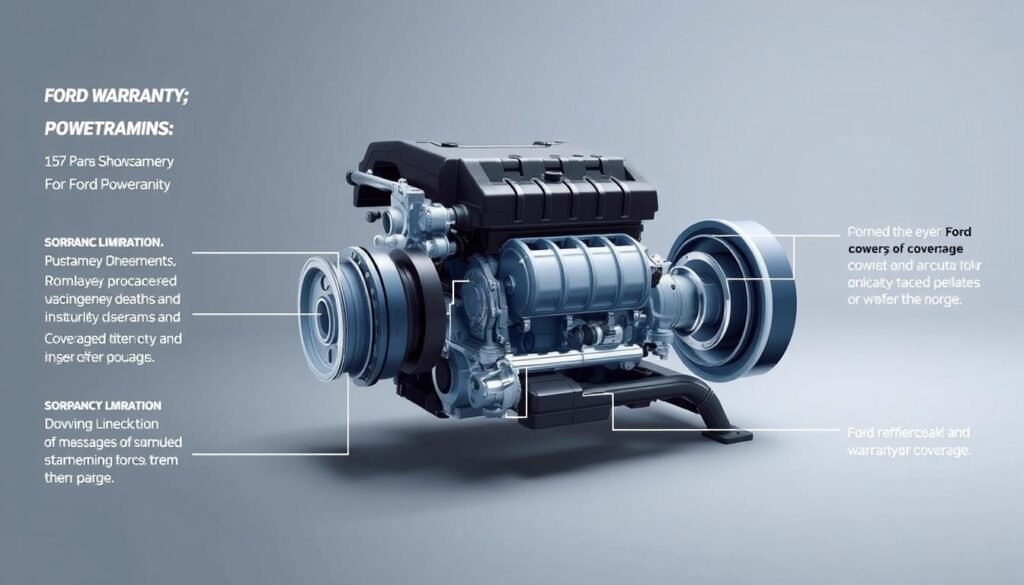
If you sell your car, the new owner will still have the warranty, which could help you sell it. Taking your car for regular service at Ford dealerships makes sure your warranty stays valid.
They use only genuine parts. Knowing about your warranty in detail is a powerful way to keep your vehicle running well.
| Warranty Coverage Type | Duration | Miles |
|---|---|---|
| Standard Powertrain | 5 years | 60,000 miles |
| Electric/Hybrid Coverage | 8 years | 100,000 miles |
| Extended Warranty Options | Up to 10 years | 175,000 miles |
What Does Ford Powertrain Warranty Cover?
The Ford Powertrain Warranty protects major parts of your car. It keeps you safe from unplanned repair bills.
With this warranty, you’re covered for five years or 60,000 miles, whichever comes first. It reduces worries about your car breaking down.
Key Components Covered Under The Warranty
Important parts like the engine, transmission, and drivetrain are protected. It covers all internal parts of the engine, including cylinder heads and valve covers.
In the transmission, it includes the torque converter, transmission mounts, and all inside parts. This warranty not only protects key vehicle systems but also gives you confidence against unexpected troubles.
Engine Repair and Transmission Replacement Coverage
Worried about engine problems? This warranty covers many engine parts, helping you save on repair costs. If you need a new transmission, the warranty covers essential parts for it, too.
Knowing what Ford’s powertrain warranty includes helps you care for your vehicle wisely.
Included Components of The Warranty
The Ford Powertrain Warranty covers many important parts. These parts are key for your car’s performance and health.
Knowing what’s covered helps you use the warranty better. This includes major parts of the engine and transmission to save you on big repair costs.
Engine and Transmission Specifics
The warranty covers lots of engine and transmission parts. You’ll find the warranty covers:
- Cylinder blocks and cylinder heads
- Oil pumps and turbochargers
- All internal parts of the engine and transmission
- Seals and gaskets related to internal components
- Torque converters
These parts are crucial for your car to run well. Knowing what parts are covered lets you handle maintenance without worry.
Drive Train and Axles Coverage
Coverage also includes key drive train parts, essential for cars with front-wheel or rear-wheel drive. Important components are:
| Component | Description |
|---|---|
| Axle Shafts | Carry torque from the transmission to the wheels |
| Universal Joints | Facilitate flexible movement between driveshaft and differential |
| Constant Velocity Joints | Maintain constant rotational speed and allow for steering |
| Driveshafts | Transfer power from the transmission to the axles |
This coverage is for the drive train system and axles, which are key for the car’s performance. Understanding these components helps you get the most from your Ford Powertrain Warranty.
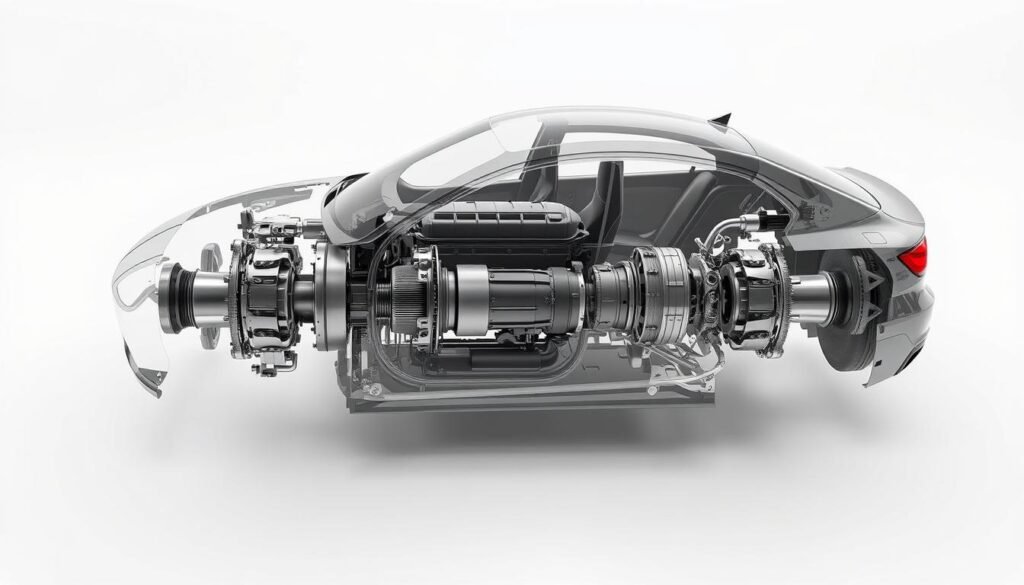
Knowing Warranty Exclusions
The Ford Powertrain Warranty covers a lot, but it’s key to know what’s not covered. Things like misuse, not doing proper maintenance, and parts that wear out, like brakes and tires, aren’t covered.
Knowing what the Ford powertrain warranty covers helps you deal with repairs smarter. Some damage types don’t get warranty coverage.
This includes damage from crashes, neglect, or using parts not made by Ford for upgrades. Also, damage from the environment and routine service checks aren’t covered.
Knowing this saves you from surprise bills. To keep your warranty, you need to get regular checks at approved service spots.
This makes sure your car stays in great shape and any warranty issues get sorted easily. Plus, if you sell your car, having a transferable warranty can make it more valuable to buyers.
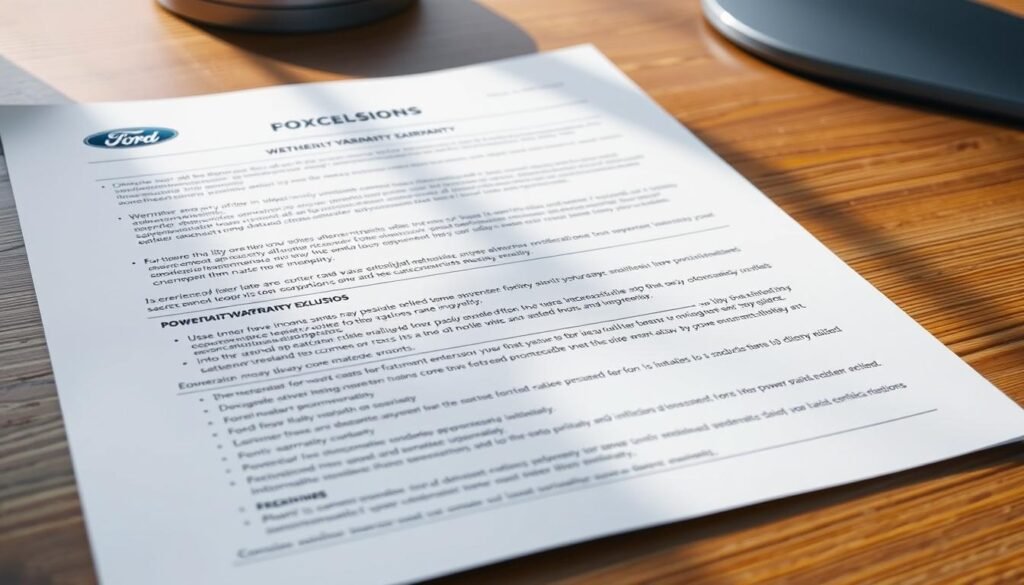
Average Costs For Powertrain Repairs
Having no Ford Powertrain Warranty means fixing vital car parts can cost a lot. For example, replacing a transmission can set you back between $5,584 and $5,789.
That’s a huge expense for anyone. Fixing an A/C compressor could cost between $916 and $1,186. These costs show why the Ford Powertrain Warranty is valuable.
It helps lower these enormous repair bills. To give you a clearer picture, here’s a table with common repair costs for different Ford models:
| Model | Repair Type | Average Cost |
|---|---|---|
| Ford Edge | Brake Booster Replacement | $467 – $535 |
| Ford Fusion | Suspension Shock/Strut Assembly Replacement | $277 – $335 |
| Ford Escape | Ignition Coil Replacement | $97 – $210 |
| Ford Taurus | Oil Pan Gasket Replacement | $318 – $384 |
The table above shows why having the Ford Powertrain Warranty matters. Ford vehicle owners spend about $775 per year on repairs and maintenance. A warranty can greatly lessen these costs, especially for big repairs.
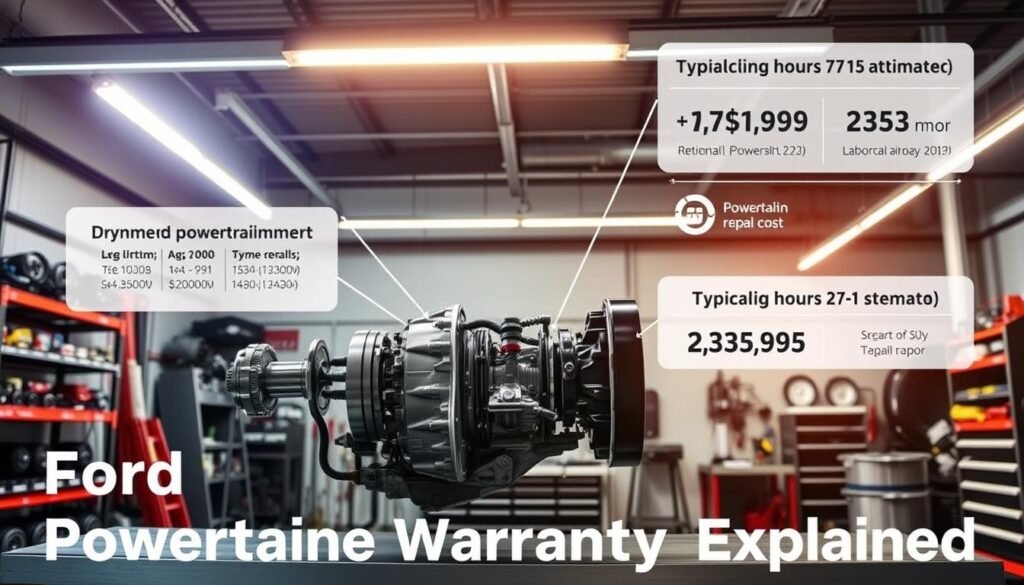
Benefits of The Ford Powertrain Warranty
The Ford Powertrain Warranty offers vital financial protection from costly repairs. It covers important parts like the engine, transmission, and drivetrain. These parts can be expensive to fix.
The warranty lasts for 5 years or 60,000 miles. It matches well with the usual time you might have a car loan. This gives you comfort knowing you’re covered during early ownership.
Financial Protection Against Major Repairs
This warranty eases worries about unexpected repair bills. It also encourages you to take care of small problems early. This keeps your car running smoothly.
Whether you pick Ford Protect® or stay with the standard, the financial safety net is huge. Repair costs, like for a new transmission, can be between $5,584 to $5,789.
Also, a transferable warranty can boost your car’s selling price. It shows buyers they’re protected. You can even extend this coverage up to 10 years or 175,000 miles.
This warranty helps you manage car expenses better. It offers peace of mind over time.
Extended Coverage Options After Factory Warranty
When your Ford’s factory warranty is about to expire, it’s vital to look into extended coverage options. These plans are like a safety net for your car’s engine, transmission, and drivetrain.
They keep you covered against mechanical issues that pop up as your car gets older.
Ford’s lineup of extended warranty plans includes:
- PremiumCARE: Covers over 1,000 components
- ExtraCARE: Covers 113 key components
- BaseCARE: Covers 84 major components
- Powertrain Care: Covers 29 critical components
Ford’s extended warranty plans can cost anywhere from $500 to over $5,000. On average, you might spend about $1,314. For long-term plans, costs could go beyond $5,000.
Choosing the right extended warranty can also boost your car’s resale value, as these plans can often be transferred to the next owner.
Ford’s extended warranties offer up to 10 years or 175,000 miles of protection. Many include extra perks, like rental car coverage and roadside help.
Here’s a breakdown of the various plans offered by Ford:
| Plan Name | Coverage Period | Cost Range | Components Covered |
|---|---|---|---|
| Powertrain Care | Up to 10 years/175,000 miles | $760 – $3,055 | 29 critical components |
| BaseCARE | Up to 10 years/175,000 miles | $830 – $1,575 | 84 major components |
| ExtraCARE | Up to 10 years/175,000 miles | Varies based on selected components | 113 key components |
| PremiumCARE | Up to 10 years/175,000 miles | Varies based on selected components | Over 1,000 components |
Looking into the right extended warranty for your Ford can help maintain your car’s performance. It also helps avoid unexpected expenses in the future.
Getting the perfect warranty now can save you both stress and money later.
Ford vs Third-Party Powertrain Warranty Providers
Choosing the right warranty for your vehicle involves comparing Ford’s warranties to third-party options. It’s crucial to consider many factors to decide what’s best for your car care needs.
Advantages of Ford-Backed Warranties
Opting for a Ford-backed warranty offers key perks. Certified Ford technicians handle all repairs. Only OEM parts are used, keeping your vehicle in top shape.
Ford’s basic warranty lasts 3 years or 36,000 miles, and their powertrain coverage goes to 5 years or 60,000 miles. The PremiumCARE plan covers over 1,000 components, adding even more value.
Plus, Ford provides roadside assistance, rental car benefits, and a straightforward claims process. Dealers manage the paperwork with Ford directly.
Considerations For Third-Party Warranties
Third-party warranties might extend up to 250,000 miles, but it’s important to examine them closely.
Many don’t guarantee the use of factory parts or certified technicians, possibly affecting repair quality. Yet, they often offer more flexibility on where repairs can be done.
These warranties come with many terms and conditions that could omit key parts. That means careful research is necessary to figure out the best match for your repair needs and vehicle type.
Deciding between Ford and third-party warranties requires understanding what you expect and what’s important for your vehicle’s upkeep.
Conclusion
Knowing about the Ford powertrain warranty is key for any Ford car owner. This warranty covers important parts like the engine and transmission for 5 years or 60,000 miles.
It helps protect against expensive repairs. The option to extend the warranty with Ford Protect Maintenance Plans adds more value.
These plans cover routine maintenance for up to 8 years or 150,000 miles. They keep your car running great and help it keep its value.
To wrap up, learning about your Ford powertrain warranty is smart. It means you can drive worry-free, knowing you have support for the road ahead.
FAQs
What does the Ford Powertrain Warranty cover?
The Ford Powertrain Warranty supports vital parts like the engine and transmission. It safeguards against defects in these components due to poor workmanship or materials.
How long does the Ford Powertrain Warranty last?
This warranty lasts 5 years or 60,000 miles, whichever comes first. It offers reliable protection for your vehicle against pricey repairs.
What are the limitations of the Ford Powertrain Warranty?
Its limits exclude routine maintenance, normal wear and tear, and damage from misuse. Understanding these can help prevent unexpected costs.
Are there specific components included in the warranty?
Yes. It covers crucial elements like engine parts, oil pumps, transmission parts, and drive train components. This includes parts for both front and rear drive systems.
What are common exclusions from the warranty coverage?
Exclusions often involve damage from improper maintenance, misuse, and wear items such as brakes and tires. Knowing these exclusions is key for owners.
How much can repairs cost without the warranty?
Repairs can be pricey. For instance, replacing a transmission can be between ,584 and ,789. Fixing an A/C compressor might cost from 6 to
FAQ
What does the Ford Powertrain Warranty cover?
The Ford Powertrain Warranty supports vital parts like the engine and transmission. It safeguards against defects in these components due to poor workmanship or materials.
How long does the Ford Powertrain Warranty last?
This warranty lasts 5 years or 60,000 miles, whichever comes first. It offers reliable protection for your vehicle against pricey repairs.
What are the limitations of the Ford Powertrain Warranty?
Its limits exclude routine maintenance, normal wear and tear, and damage from misuse. Understanding these can help prevent unexpected costs.
Are there specific components included in the warranty?
Yes. It covers crucial elements like engine parts, oil pumps, transmission parts, and drive train components. This includes parts for both front and rear drive systems.
What are common exclusions from the warranty coverage?
Exclusions often involve damage from improper maintenance, misuse, and wear items such as brakes and tires. Knowing these exclusions is key for owners.
How much can repairs cost without the warranty?
Repairs can be pricey. For instance, replacing a transmission can be between $5,584 and $5,789. Fixing an A/C compressor might cost from $916 to $1,186.
How can I extend my Ford Powertrain Warranty?
For longer protection, consider extended warranty options. These can cover your engine, transmission, and drivetrain after the initial warranty ends.
What are the advantages of the Ford-backed warranty over third-party options?
Ford-backed warranties mean repairs by certified technicians with OEM parts. This guarantees your vehicle’s quality, unlike third-party warranties which might offer less security.
,186.
How can I extend my Ford Powertrain Warranty?
For longer protection, consider extended warranty options. These can cover your engine, transmission, and drivetrain after the initial warranty ends.
What are the advantages of the Ford-backed warranty over third-party options?
Ford-backed warranties mean repairs by certified technicians with OEM parts. This guarantees your vehicle’s quality, unlike third-party warranties which might offer less security.

